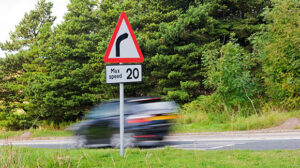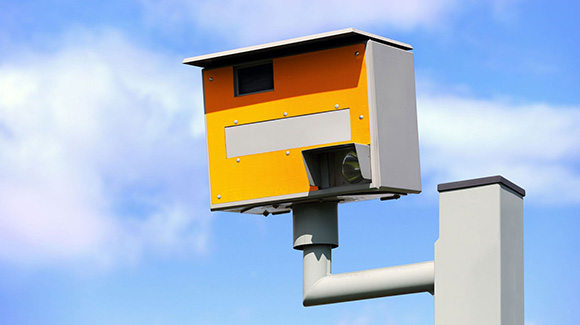Home » Driving Laws » Speed Awareness Course
Speed awareness courses, everything you need to know
What is a national speed awareness course?
If you’re caught speeding, you may have the option to attend and complete a speed awareness course. This is as an alternative to prosecution, fine and/or penalty points on your driving licence.
The course is a theory based workshop which contains a mixture of presentations, discussions, and activities. It is not intended to lecture you about your driving habits. Instead, it aims to positively change your attitudes and behaviours about road safety and reduce reoffending.
Due to the coronavirus pandemic, all classroom-based speed awareness courses are currently suspended. Online digital classroom courses are offered instead where possible.
Speed awareness courses are run by the National Driver Offender Retraining Scheme (NDORS). The police are not involved in the delivery of the course, although they are informed once someone has completed a course to ensure no further action is taken for the offence.
You must attend and complete the speed awareness course within 120 days from the date of your speeding offence.
By attending and completing a speed awareness course you avoid penalty points on your driving licence, which would normally result in higher motor insurance premiums. You also avoid paying a fixed penalty fine for speeding, normally £100. But you will have to pay to attend one of the speed awareness courses instead, which will be of similar cost. Furthermore, attending a speed awareness course is not a driving conviction.
What’s covered on a speed awareness course?
Some of the material covered on a speed awareness course includes:
- Understanding the importance of staying within the speed limits.
- How to identify the speed limits on certain roads.
- The reasons why drivers speed in the first place.
- Recognise what makes you speed e.g., being tailgated, overtaking and how to deal with these situations.
- What drivers can do to avoid speeding.
Each course can have up to 9 participants in the virtual classroom. It is an open discussion that encourages attendees to share their experiences with the group.
When would you be offered a speed awareness course?
Not everyone that commits a speeding offence will be given the option to attend a speed awareness course. It is at the discretion of each local police force.
You may be eligible to attend a speed awareness course if:
- You have admitted to being the driver of the vehicle at the time of the alleged offence and returned the documentation within 28 days from the date the notice was sent to you.
- If you haven’t attended a speed awareness course within 3 years of the new offence.
- There have been no further offences committed at the time of the new offence.
- The speed you were caught driving at was within an acceptable speed range, typically within the range of (10% + 2) mph to (10% + 9) mph over the limit. This excludes 20 mph zones and limits though.
If you’ve committed a speeding offence, the police will notify you within 14 days of the alleged offence. If you’re eligible to attend a speed awareness course, you will be given three options:
- Attend and complete a speed awareness course. Or
- Accept the conditional offer of fixed penalty, typically a £100 fine and have your licence endorsed with 3 penalty points. Or
- Request a court hearing to appeal the alleged offence.
You have 28 days from the date the notice was sent to you to book and pay for the speed awareness course or to accept the fixed penalty notice.
You can book a speed awareness course either online or via the telephone and there are a selection of course dates and times to choose from.
How much is a speed awareness course?
The cost to attend and complete a speed awareness course can typically vary between £80 and £100 depending on the local police force.
How long is a speed awareness course?
The course duration is around 2 hours and 45 minutes which includes the signing in process and a 10-minute break during the session.
Do I need to declare a speed awareness course to my insurer?
You do not have to inform your insurer that you have attended and completed a speed awareness course unless they specifically ask you.
Can you fail a speed awareness course?
There is no exam or test to take on the speed awareness course. But attendees are expected to attend the full session, take an active part in discussions, and demonstrate a willingness to change their attitudes and behaviour to road safety.
You will not be able to complete the course if you fail to meet this criteria to a satisfactory standard.
Will I need photo identification for the speed awareness course?
You will need to produce your photo card driving licence on the day of the course to confirm your identity. Your course trainer will usually ask for this during the initial registration at the start of the course.
It may be possible to use another form of photographic identification, but you will need to check this with your course provider beforehand.
If you do not have valid identification, you will not be able to attend the course.
What equipment do I need to attend the course?
The course provider will deliver the course via Zoom through a secure online video link.
To attend the course, you will need a device which has a microphone, front facing camera, stable internet connection and sufficient battery charge to last the full session. Smartphones and tablets are acceptable if they are compatible with the latest Zoom updates.
You will need to familiarise yourself with the equipment and network that you intend to use during the course. You may also need a notepad and pen to take notes.
Throughout the duration of the course, you should be on your own in a private room, with no distractions. This means switching off any other devices that you are not using to access the course. You should also ensure that no one else has access to the course material.
How long does a speed awareness course stay on your record?
Your record will be retained on a national police database for a period of 3.5 years. During which time you may not be eligible to attend another speed awareness if you reoffend.
Tips on how to avoid speeding
- Allow yourself plenty of time to complete your journey. This means plan your journey beforehand. Factor in weather conditions, traffic hotspots and any stop-offs along the way like rest breaks.
- When driving on built-up roads, assume the speed limit is 30 mph, unless you see signs that state otherwise. These built-up areas are usually identified by the presence of streets lights.
- Use your gears to control your speed, especially in built-up areas. Drop down to 3rd gear when in a 30 mph zone, if necessary.
- Remember speed limits are set for a reason. Exceeding the speed limit to make up time on your journey will literally save you minutes off your journey time. It also puts you and other road users in danger.
- Speed limits are the maximum speed for that road and you should slow down in the following situations:
- Around schools or when children are about.
- On busy or narrow roads.
- Where there are parked vehicles that reduce the width of the road you’re travelling on.
- In poor weather conditions.
- Narrow or bendy roads where visibility is restricted.
- At roadworks.
- In the presence of other pedestrians.
- If someone is tailgating you, ease off your speed to allow more space in front of your vehicle for them to overtake if necessary. Remember only a fool breaks the 2 second rule!
- Avoid distractions that may cause you to lose concentration like mobile phones, peer pressure from passengers, loud music and loose items that may move around.
Black box insurance
When faced with higher motor insurance premiums, young drivers may benefit from taking out a black box insurance policy. This requires the young driver to install a black box device in their vehicle that monitors their driving behaviour, including their speed. This helps to measure how safely they are driving.
Final thoughts
Many motorists exceed the speed limit without even realising. Getting caught speeding can happen to anyone. If you’re given the option to attend a speed awareness course, then this article has hopefully given you some insight into what to expect on the course.
Learn more
Share this article
Table of Contents
More posts

What Happens If You Drive In A Bus Lane By Mistake?

What Happens If You Speed With A Black Box?

UK Speed Limits: Here’s What You Need To Know


